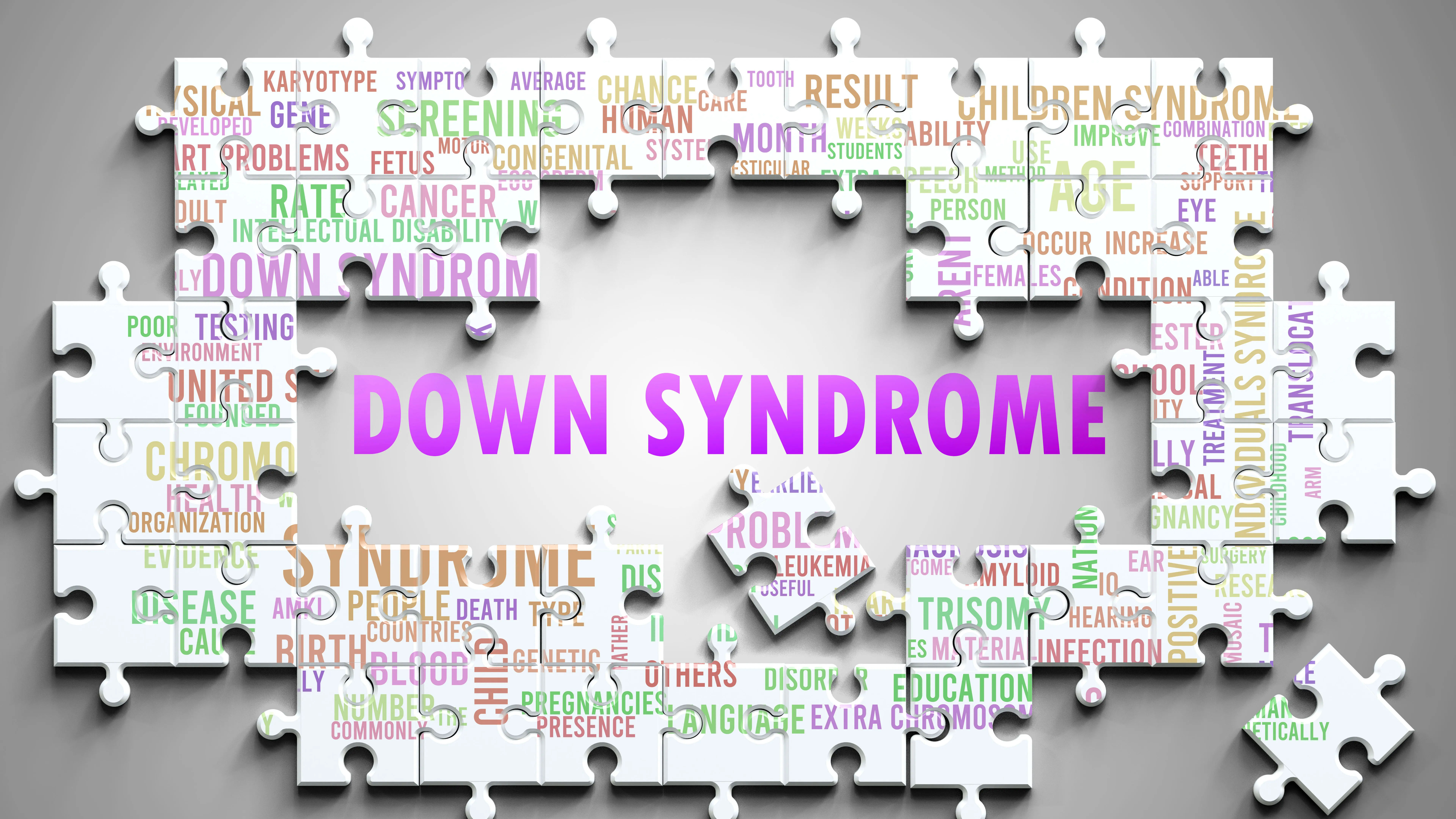Guide to How You Can Identify Down Syndrome
Discover the common causes behind constantly cold hands and feet, from circulatory issues to underlying health conditions. Learn when to see a doctor.


Introduction
If you’re wondering how to identify Down syndrome—before birth, at birth, or later in infancy—you’re not alone. Down syndrome is the most common chromosomal condition and affects about 1 in 700 babies. Families often have questions about what doctors look for, what parents might notice at home, and how screening differs from diagnosis. This guide brings together the best available medical guidance in plain language so you can confidently navigate each step.
You’ll learn the key signs of Down syndrome in babies, how prenatal screening (like NIPT) works, which ultrasound markers matter, and when confirmatory testing such as CVS or amniocentesis, is recommended. We’ll also cover newborn assessments, early developmental milestones, associated health conditions, and what to do if you receive a positive screen or have concerns after birth. Along the way, you’ll find practical tools, checklists, and resources to support your family—plus a few myths we’ll gently retire. Whether you’re an expectant parent or caring for a newborn, this down to earth guide will help you recognize what’s important, make informed decisions, and get the right care at the right time.
What Down Syndrome Is and Why Identification Matters?
Down syndrome is a genetic condition caused by extra genetic material from chromosome 21. Most commonly, it’s trisomy 21, where every cell has an extra copy; less commonly, it’s a translocation, where extra 21 material is attached to another chromosome, or mosaic Down syndrome, where some but not all cells have the extra chromosome. About 95% of cases are trisomy 21, 3–4% are translocation, and 1–2% are mosaic.
How common is it? In the United States, the CDC estimates about 1 in 700 live births involve Down syndrome. The chance increases with maternal age, but the majority of babies with Down syndrome are born to younger women because more births occur in that age group.
Why does early identification matter? Prompt recognition helps ensure recommended checks happen right away: screening for congenital heart defects, hearing and vision evaluation, and thyroid testing, among others. Early intervention programs can support motor, language, and social development from infancy, and families can connect to resources and accurate information sooner. Importantly, identification is not about predicting potential; it’s about tailoring care. Children with Down syndrome often have distinct strengths—social engagement, visual learning, and persistence—and many thrive with inclusive education and therapies.
Unique insight: Think of identification like a personalized care map. The sooner you know the route, the sooner you can schedule stops (heart echo, feeding supports, early therapy) that keep your baby growing and thriving—all while avoiding unnecessary detours. If questions arise or symptoms persist beyond two weeks, consult a doctor online with Apollo 24|7 for guidance tailored to your situation.
Consult a Top General Physician
How is Down syndrome identified Before Birth? (Prenatal)
Prenatal identification begins with screening tests that estimate risk and, if indicated, diagnostic tests that confirm whether the fetus has Down syndrome. Screening is optional and should align with your values and preferences.
First-trimester combined screening (around 11–14 weeks) includes a blood test (PAPP-A and free beta-hCG) plus ultrasound nuchal translucency measurement. Together, these estimate the chance of trisomy 21. Sensitivity is good but not as high as newer DNA-based tests.
NIPT/cfDNA (noninvasive prenatal testing), typically from 10 weeks, analyzes cell-free DNA fragments in the mother’s blood. For trisomy 21, NIPT has very high sensitivity and specificity (often >99% in validation studies), but it remains a screening test—not diagnostic. The positive predictive value depends on baseline risk; in younger populations with lower prevalence, a “positive” may still have a meaningful chance of being a false positive. This is why confirmatory testing is recommended after a high-risk screen.
Ultrasound markers: In the first and second trimesters, sonographers may note soft markers such as increased nuchal translucency, absent/hypoplastic nasal bone, a heart defect (e.g., AV canal), echogenic intracardiac focus, duodenal atresia (“double bubble”), or short femur/humerus. A single soft marker alone usually does not confirm Down syndrome; patterns and context matter.
Diagnostic tests: Chorionic villus sampling (CVS) at 10–13 weeks samples placental tissue; amniocentesis at 15+ weeks samples amniotic fluid. Both provide fetal cells for karyotype or microarray, giving a definitive diagnosis. Risks of miscarriage are low but nonzero, often quoted around 0.1–0.3% in experienced centers. Discussing your personal risk-benefit preferences with a clinician or genetic counselor is key.
Unique insight: If you get a high-risk NIPT for trisomy 21, ask for the lab’s positive predictive value for your age and gestation, not just “positive/negative.” This turns an abstract result into a more actionable probability. For questions about interpreting results or planning next steps, consult a doctor online with Apollo 24|7.
Identifying Down Syndrome at Birth and in Infancy
Some babies with Down syndrome are identified at birth based on physical features and confirmed with a rapid karyotype. However, features vary, and some infants—especially with mosaic Down syndrome—may have subtle signs.
Common physical features include:
• Hypotonia (low muscle tone), often noticeable when lifting the baby
• A flat facial profile, small nose with a flattened nasal bridge
• Upslanting palpebral fissures and epicanthal folds
• Small ears, a single palmar crease, a wider first toe gap (“sandal gap”)
• Brushfield spots (speckled iris pattern)
Newborn assessments: Because about 40–50% of infants with Down syndrome have congenital heart disease (e.g., atrioventricular septal defects), an early echocardiogram is standard. Newborn hearing screening should be completed, and thyroid function (TSH) is typically checked, given higher rates of hypothyroidism. Feeding assessments address hypotonia-related latch or swallowing difficulties. If these tests are recommended, Apollo 24|7 offers convenient home collection for blood tests like TSH or CBC in many areas; imaging and hearing tests still require facility-based services.
Early developmental signs: Babies may have delayed head control, rolling, and sitting due to hypotonia. Early intervention can help motor and communication skills progress steadily. Remember: a single feature (like a single palmar crease) can be found in people without Down syndrome, and many babies without Down syndrome can have feeding or tone issues. A chromosomal test is the only way to confirm.
Unique insight: Keep a simple “first month notebook.” Note feeding duration and effort, tone, and any clinician observations. If multiple features cluster—or if a clinician mentions concern—ask directly about a karyotype test. It’s a small step that can unlock the right supports sooner.
Associated Health Conditions and the Importance of Early Checks
Identifying Down syndrome promptly helps clinicians proactively screen for conditions that occur more frequently, leading to better outcomes.
Heart, hearing, vision: Congenital heart defects occur in up to half of infants, so an early echocardiogram is recommended. Recurrent ear infections and conductive hearing loss are common due to narrow ear canals; regular audiology checks are advised [8]. Vision issues such as refractive errors, strabismus, and early cataracts are more frequent; routine ophthalmology exams help preserve function.
Thyroid, blood, GI issues: Congenital or acquired hypothyroidism is more common; periodic TSH monitoring is recommended. Hematologic issues range from transient myeloproliferative disorder in newborns to a higher lifetime risk of leukemia; clinical vigilance and routine pediatric care matter. GI conditions include duodenal atresia (presenting with bilious vomiting) and Hirschsprung disease (severe constipation), which may require surgical evaluation. Celiac disease risk is increased; symptom-guided screening is typical.
Growth, sleep, immunity: Short stature and unique growth curves apply; using Down syndrome–specific growth charts helps track progress. Sleep-disordered breathing is common; a sleep study is often recommended by age 4, earlier if symptoms like snoring or pauses are present. Immune differences can contribute to more frequent infections; vaccinations and routine care are especially important.
Unique insight: Ask your pediatrician for a written “Down syndrome health checklist” aligned with AAP guidance. Keep it in your diaper bag or phone. Ticking off recommended checks (heart, hearing, thyroid, vision, sleep) turns a long list into a series of doable steps. If your child’s symptoms don’t improve with routine measures, book a visit with a pediatrician through Apollo 24|7 to reassess and coordinate referrals.
If You Get a Positive Screen or Suspect Down Syndrome: Next Steps
A positive prenatal screen (first-trimester combined screen or NIPT) signals an increased chance of Down syndrome but is not a diagnosis. The next step is to discuss confirmatory testing—CVS (earlier) or amniocentesis (later)—with your clinician or a genetic counselor.
Understanding probabilities: The same NIPT result can mean different things depending on your baseline risk. For example, in a 25-year-old with a lower baseline risk, the positive predictive value is lower than in a 40-year-old, even if the lab’s sensitivity and specificity are similar. Ask your care team to calculate your personalized positive predictive value. This helps you decide whether to proceed with diagnostic testing.
Interpreting ultrasound: A single soft marker like an echogenic intracardiac focus is often benign, especially if NIPT is negative. Multiple markers or major anomalies (e.g., AV canal) strengthen the case for diagnostic testing.
Postnatal suspicion: If clinicians note features consistent with Down syndrome, a blood sample for karyotype can confirm within days. Mosaic Down syndrome may require more careful interpretation.
Emotional and practical support: It’s normal to feel overwhelmed. Many families find it helpful to connect with peer support through NDSS, local Down syndrome associations, or hospital-based support programs. Genetic counseling can explain recurrence risk and the difference between trisomy, translocation, and mosaic forms. If you need timely guidance or a second opinion after a new screening result, consult a doctor online with Apollo 24|7 for next-step planning and referrals.
Unique insight: Create a “decision grid” with three columns: wait and watch; do further screening; have diagnostic testing. With your counselor, list pros/cons and how each option aligns with your values (e.g., certainty vs. avoiding invasive procedures). This keeps the decision centered on what matters most to you.
Recognizing Down Syndrome Across the Lifespan
Identification doesn’t end with birth. Health and developmental profiles evolve from infancy through adulthood.
Early childhood: Hypotonia and ligamentous laxity affect gross motor milestones; physical and occupational therapy help build core strength and coordination. Early speech therapy addresses oral-motor tone and expressive language, while capitalizing on relative strengths in social communication and visual learning.
School age: Children often benefit from inclusive classrooms, visual supports, structured routines, and targeted reading and math strategies that leverage pattern recognition and repetition. Hearing and vision optimization remain foundational to learning [8]. Behavioral concerns (e.g., attention or sensory processing differences) are addressed with multidisciplinary care.
Adolescence and adulthood: Ongoing attention to thyroid function, sleep apnea, weight management, atlantoaxial stability (as indicated), and mental health supports thriving into adulthood [8]. Adults may have unique strengths in community engagement, hospitality, and task routines. Mosaic Down syndrome can present more subtle developmental differences; some individuals are identified later because signs are milder.
Unique insight: Build a “strength-first profile” for your child at each stage—what motivates them, how they learn best, and what environments help them shine. Share it with teachers and therapists. Identification is not just about risks; it’s about revealing strengths you can lean on.
Myths vs. Facts About Identifying Down Syndrome
• Myth: Only older mothers have babies with Down syndrome. Fact: Risk rises with maternal age, but most babies with Down syndrome are born to younger women because more births occur in this group.
• Myth: Ultrasound or NIPT gives a diagnosis. Fact: Ultrasound and NIPT are screening tools. Only CVS or amniocentesis (prenatal) or a postnatal karyotype can diagnose Down syndrome.
• Myth: You can always tell by appearance at birth. Fact: While many features are recognizable, appearance alone is not definitive. Mosaic Down syndrome may be subtle, and not all babies show classic features. Genetics confirms the diagnosis.
• Myth: A single soft marker means a baby has Down syndrome. Fact: Most soft markers are nonspecific. The overall pattern and combined results with screening guide next steps.
Unique insight: Replace “Looks like” with “Let’s check.” It shifts conversations from assumption to evidence, supporting respectful, accurate care.
Working With Your Care Team
Which specialists help and when: In addition to your obstetrician and pediatrician, teams often include a genetic counselor, pediatric cardiologist, audiologist, ophthalmologist, endocrinologist (thyroid), gastroenterologist (as needed), sleep specialist, and therapists (PT/OT/SLP). Many centers offer Down syndrome clinics that coordinate care.
Recommended screening schedule: The AAP provides a health supervision framework for children with Down syndrome covering newborn through adulthood. It outlines when to obtain echocardiograms, thyroid labs, hearing and vision exams, celiac screening, sleep studies, and more [8]. Ask your pediatrician to align your child’s care with these milestones and document results.
Telehealth and coordinated care: Virtual visits are useful for reviewing test results, adjusting care plans, and addressing feeding or sleep concerns. Keep a shared digital folder with reports and growth charts to save time. If your condition does not improve after trying recommended strategies or if you need help arranging specialist visits, book a physical or online visit with Apollo 24|7 to coordinate next steps. Apollo 24|7 also offers convenient home collection for tests like TSH, CBC, and vitamin D to reduce clinic trips.
Unique insight: A single “care calendar” that pairs AAP-recommended checks with your family’s schedule (e.g., bundle thyroid labs with routine immunization visits) cuts down on logistics—and stress.
Practical Tools and Checklists for Families
What to track at home:
• Feeding and growth: Duration, effort, and any choking or reflux
• Breathing during sleep: Snoring, pauses, restless sleep
• Hearing/vision behaviors: Startle responses, tracking faces/toys, frequent ear tugging
• Developmental milestones: Head control, rolling, sitting, babbling, first words
• Notes from appointments: Add dates and outcomes for heart echo, TSH, hearing, and vision assessments
When to call the doctor:
• Poor feeding, inadequate weight gain, or signs of dehydration
• Breathing concerns, cyanosis, or persistent cough
• Recurrent ear infections or concerns about hearing/vision
• Persistent constipation, bilious vomiting, or severe abdominal distension
• Slowed development or loss of skills
Case example: A parent notices persistent snoring and pauses in a toddler with Down syndrome. They record videos on their phone, share them during a telehealth visit, and get a referral for an early sleep study. The result? Earlier treatment and better daytime energy and learning.
Unique insight: Use your smartphone camera strategically. Photos can capture subtle features (e.g., Brushfield spots), and short videos of feeding or sleep can speed up the right referral. If you’re unsure whether a symptom warrants a visit, consult a doctor online with Apollo 24|7 for timely triage.
Conclusion
Identifying Down syndrome is about clarity and care—not snap judgments. Before birth, screening options like NIPT and first-trimester combined testing estimate risk, while diagnostic tests such as CVS and amniocentesis provide certainty. After birth, clinicians look at clusters of features and confirm with chromosome analysis. From there, early evaluations of the heart, hearing, vision, thyroid, and feeding help your child get the right support at the right time.
Equally important is recognizing strengths and building a team that understands your child’s unique profile. With the AAP’s health supervision guidelines as a roadmap, regular check-ins and early intervention keep progress steady. Families who track key observations and use telehealth for quick touchpoints often feel more in control and less overwhelmed.
Whether you’re interpreting a new screening result or seeking answers after delivery, you don’t have to navigate this alone. Use the tools in this guide, connect with reputable resources, and partner closely with your care team. If questions linger or symptoms persist, consult a doctor online with Apollo 24|7 for tailored advice, and take advantage of home collection for common labs like TSH and CBC, where available. With informed steps, compassionate support, and a plan you trust, your family can move forward with confidence and hope.
Consult a Top General Physician
Consult a Top General Physician

Dr. Rajib Ghose
General Physician/ Internal Medicine Specialist
25 Years • MBBS
East Midnapore
VIVEKANANDA SEBA SADAN, East Midnapore

Dr Divya Lekha Gunta
General Practitioner
10 Years • MBBS, MD (Pathology)
Visakhapatnam
Apollo 24|7 Clinic - Andhra Pradesh, Visakhapatnam

Dr. Sougata Kumar
General Practitioner
8 Years • MBBS
East Midnapore
VIVEKANANDA SEBA SADAN, East Midnapore

Dr. Vikram V Mangalvedi
General Physician/ Internal Medicine Specialist
11 Years • MBBS. MD General Medicine DNB General Medicine
Bengaluru
Apollo Clinic, JP nagar, Bengaluru

Dr. Abhishek Ranjan
General Practitioner
4 Years • MBBS
Kolkata
VDC Clinic, Kolkata
Consult a Top General Physician

Dr. Rajib Ghose
General Physician/ Internal Medicine Specialist
25 Years • MBBS
East Midnapore
VIVEKANANDA SEBA SADAN, East Midnapore

Dr Divya Lekha Gunta
General Practitioner
10 Years • MBBS, MD (Pathology)
Visakhapatnam
Apollo 24|7 Clinic - Andhra Pradesh, Visakhapatnam

Dr. Sougata Kumar
General Practitioner
8 Years • MBBS
East Midnapore
VIVEKANANDA SEBA SADAN, East Midnapore

Dr. Vikram V Mangalvedi
General Physician/ Internal Medicine Specialist
11 Years • MBBS. MD General Medicine DNB General Medicine
Bengaluru
Apollo Clinic, JP nagar, Bengaluru

Dr. Abhishek Ranjan
General Practitioner
4 Years • MBBS
Kolkata
VDC Clinic, Kolkata
More articles from Down S Syndrome
Frequently Asked Questions
1) How accurate is NIPT for Down syndrome?
NIPT (cfDNA) has very high sensitivity and specificity for trisomy 21, often over 99%, but it’s still a screening test. A positive screen should be confirmed with CVS or amniocentesis for diagnostic certainty. Ask about the positive predictive value for your age to understand the chance it’s truly positive.
2) What are early signs of Down syndrome in babies?
Common signs include hypotonia (low muscle tone), a flat facial profile, upslanting eyes, epicanthal folds, small ears, a single palmar crease, and a sandal gap. These signs vary; only a genetic test confirms Down syndrome. If you notice multiple signs, ask your pediatrician about testing.
3) What should I do after a positive prenatal screening?
.Discuss confirmatory testing (CVS or amniocentesis) with your clinician or a genetic counselor. Consider your personal values, timing, and risk tolerance. For quick guidance on options, consult a doctor online with Apollo 24|7.
4) Can Down syndrome be mild, like mosaic Down syndrome?
Mosaic Down syndrome means some cells have an extra chromosome 21 and others do not. Signs may be milder or subtler, which can delay recognition. Diagnosis still requires genetic testing.
5) What health checks are most important in the first year?
Key checks include an echocardiogram, hearing screening, thyroid (TSH) testing, vision evaluation, and monitoring of feeding/growth. Follow AAP guidance on timing and repeat intervals. Apollo 24|7 offers home collection for many labs to make follow-through easier.


